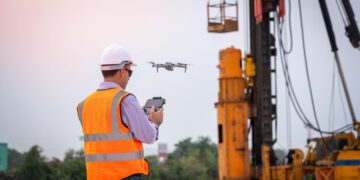The retail landscape, always in a state of flux, is now witnessing a profound transformation with the advent of robotics and AI. This isn’t just about automating checkout lines or restocking shelves but about crafting an enhanced, personalized shopping experience for every individual who steps into – or interacts with – a store.
“As the lines between the digital and physical worlds blur, robotic retail emerges as the bridge, offering consumers an unparalleled blend of convenience, customization, and connection.”
1. Personal Shopper Bots
Gone are the days of aimlessly wandering through store aisles. AI-powered robots can now serve as personal shoppers, guiding customers to desired products, offering recommendations based on past purchases, and even suggesting complementary items.
2. Smart Inventory Management
With integrated sensors and real-time data processing, robots are revolutionizing inventory management. They can instantly detect when a product is running low, rearrange stock for optimal placement, and even predict future inventory needs based on sales trends.
3. Virtual Try-Ons and Augmented Reality
Why try on ten different outfits when a robot can simulate how each would look on you? With augmented reality integration, robotic retail systems allow customers to virtually ‘try on’ clothes, accessories, or even makeup, ensuring satisfaction before purchase.
4. Seamless Checkouts
Robotic checkouts, equipped with AI, promise an end to long queues. These systems can automatically scan and tally items in a cart, process payments, and even pack purchases, all in a fraction of the current time.
5. Data-Driven Customer Insights
Every interaction with a robotic retail system is a data point. Over time, these systems can understand individual customer preferences, shopping habits, and more. Retailers can use this data to tailor marketing campaigns, offer personalized discounts, and optimize store layouts.
6. Chatbots and After-Sales Service
The role of robots isn’t confined to physical stores. Online, chatbots powered by AI assist customers, answering queries, processing returns, and offering post-purchase support. They’re available 24/7, ensuring customers always have assistance when needed.
7. Sustainable and Efficient Operations
Robotic systems, with their precision and data-driven operations, significantly reduce waste. They ensure energy-efficient store operations, optimal product rotations to minimize expiry-related losses, and even manage waste sorting and recycling.
8. Adapting to the Robotic Retail Model
For retailers, moving to a robot-centric model requires investment in technology and training. However, the long-term benefits – in terms of customer loyalty, operational efficiency, and profitability – make it a worthwhile venture.
Conclusion
Robotic retail, with its blend of AI and automation, promises a future where shopping is not just a chore or a pastime but an experience. As technology continues to evolve, retailers and customers alike stand to benefit from this harmonious fusion of tech and trade.




















